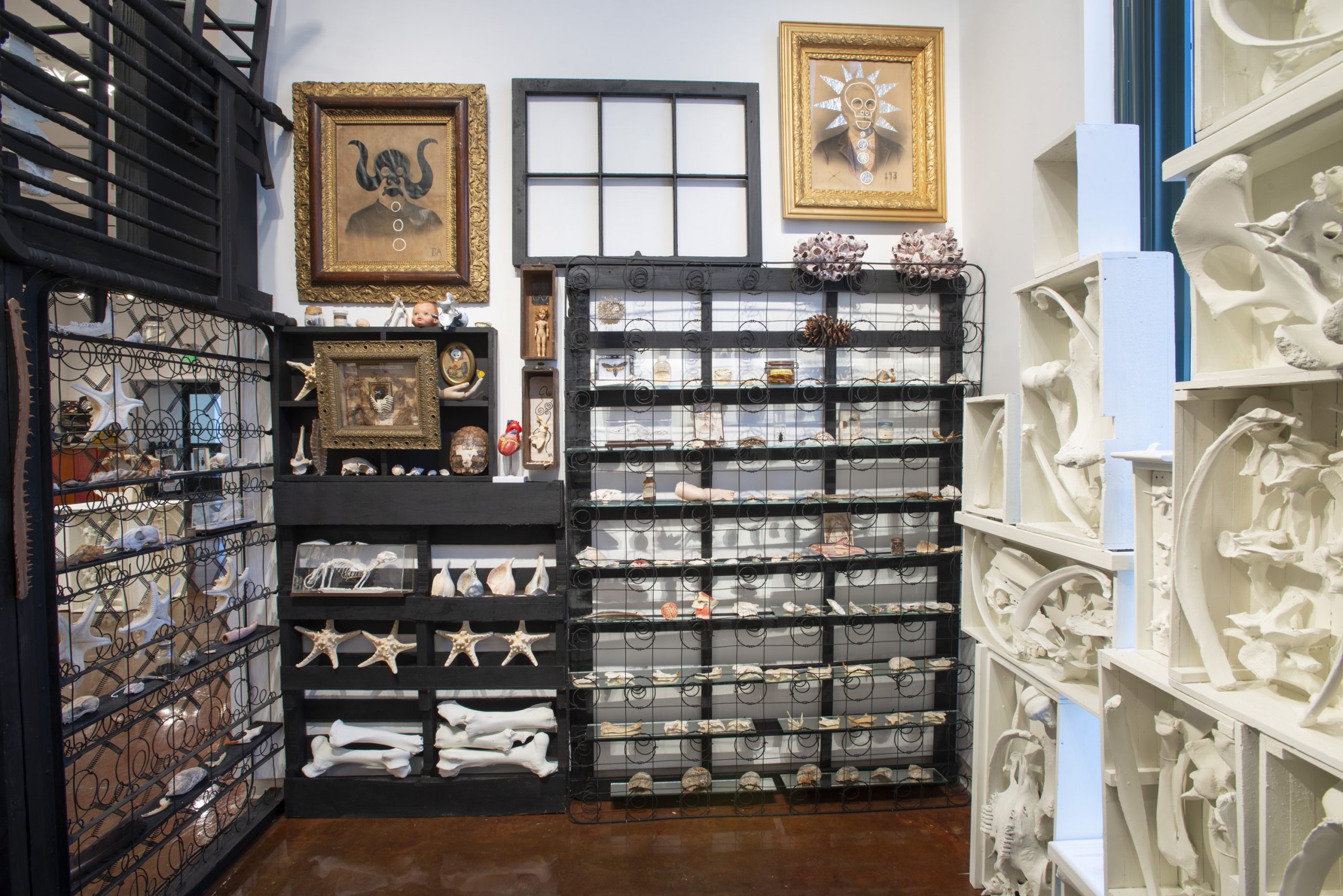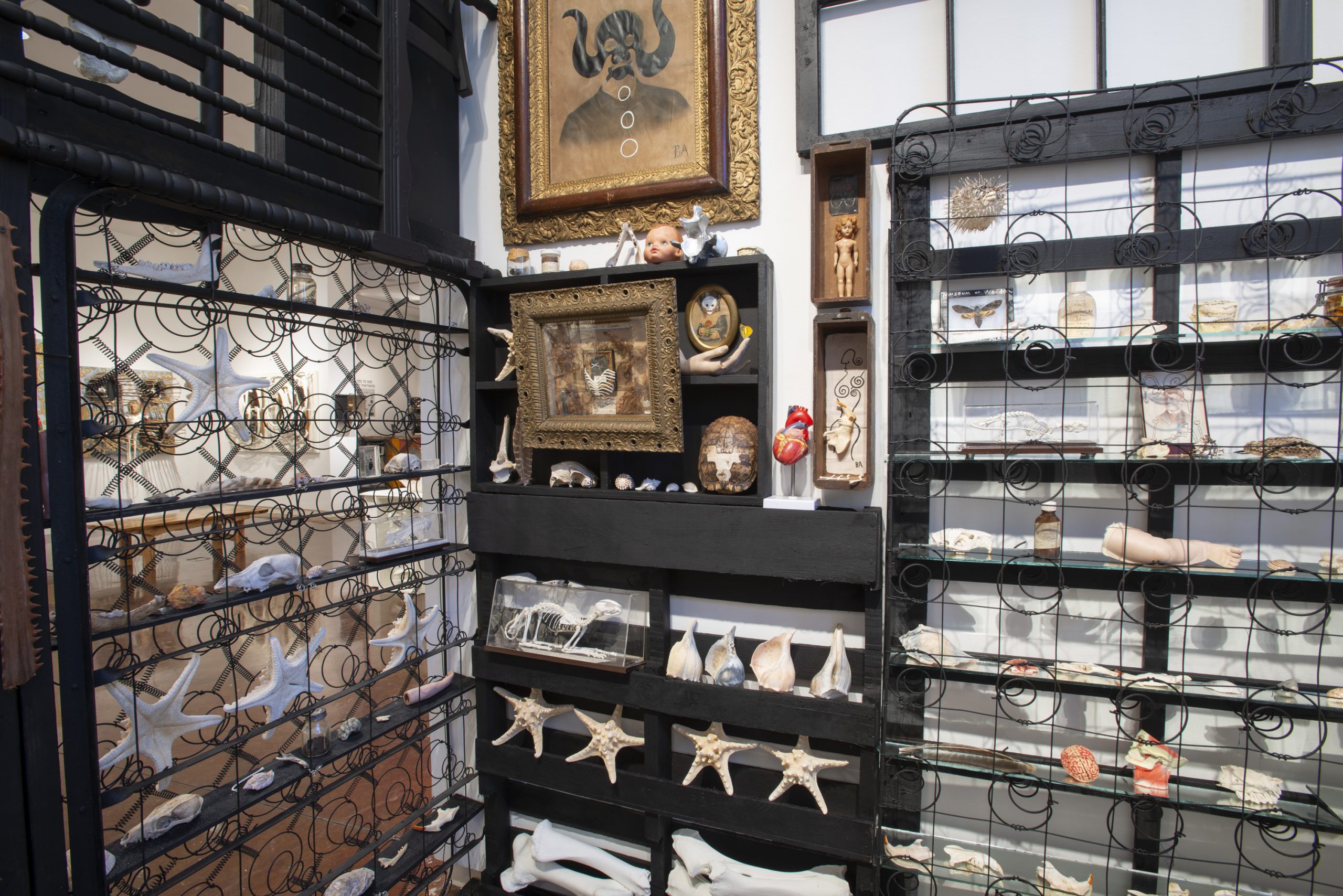


When I was first introduced to Butch Anthony’s Cabinet of Curiosities, titled Portrait of Johnny Parker as well as his other works in the exhibition Inside/Out, I was filled with just that: curiosity. I did not know much about the history of his Cabinet of Curiosities or where Anthony had gotten the idea to display art in such an unique way. After researching the origins of this particular style of art, I was able to compare and contrast the tradition of Cabinets of Curiosities to Anthony’s updated version.
Cabinets of Curiosities first began to appear during the 16th Century and were commonly referred to as Wunderkammern, or “wonders or miracles of the world.”[i] They were intended for the wealthy to display fascinating objects that they had collected from their travels around the world.[ii] The cabinets that first appeared during this time ranged in size from a small drawer to larger installations that could fill an entire room. The objects that were housed inside of these cabinets “offered an opportunity to tell a story about an epic adventure, or more often, to fabricate one.”[iii] These cabinets were used to portray fortune, travel, and the journey from where the objects came as well as a sneak peek into the life of the collector. Most of these cabinets functioned as status symbols and they usually reflected the owner’s specific style and identity to the public.

Ole Wurm, Musei Wormiani
Throughout the span of the 18th century, the theme of these Cabinets changed. The Cabinets were no longer seen as status symbols, instead focusing on science in order to “make sense of the world we lived in, in a more objective way.”[iv] A famous example of this was Ole Worm’s Museui Wormiani,[v]a full-size room filled with skeletons, minerals, preserved animals, and other man-made items, such as ethnographic specimens and clockwork automata.[vi] While the Cabinets eventually became overshadowed by the modern museum displays of art and artifacts and went out of fashion, Butch Anthony has offered a newfound sense of wonder in his modern-day Cabinet of Curiosities.
Starting at the age of fourteen, Anthony became fascinated with the life and nature that surrounded him in his hometown of Seale, Alabama. He has taken his passion collecting art, artifacts, taxidermized animals, and antiques and started the Museum of Wonder, a modern-day Cabinet of Curiosities, located on his property in Seale.

Butch Anthony, Portrait of Johnny Parker [detail], 2019. Installation view, photo: Rick Rhodes

Butch Anthony, Portrait of Johnny Parker [detail], 2019. Installation view, photo: Rick Rhodes
by Grace Edson, Halsey Institute intern
[i] “What is a Cabinet of Curiosities?” Joukowsky Institute for Archaeology & the
Ancient World, Brown University, www.brown.edu/Departments/
Joukowsky_Institute/courses/archaeologicaltheory/5146.html. Accessed 13
Feb. 2020.
[ii] Ibid
[iii] Aloi, Giovanni. “Cabinets of Curiosities and The Origin of Collecting.”
Sotheby’s Institute of Art, 29 Aug. 2018, www.sothebysinstitute.com/
news-and-events/news/cabinets-of-curiosities-and-the-origin-of-collecting/.
Accessed 12 Feb. 2020.
[iv] Ibid
[v] Goran, David. “Cabinets of Curiosities were collections of rare and historically
important or unusual objects from the natural world.” The Vintage News, 4
Mar. 2016, www.thevintagenews.com/2016/03/04/
cabinets-of-curiosities-were-collections-of-rare-and-historically-important-or-un
usual-objects-from-the-natural-world/. Accessed 12 Feb. 2020.
[vi] Lubar, Steven. “Cabinets of Curiosity: What they were, Why they disappeared, and
Why they’re so popular now.” Medium, 1 Oct. 2018, medium.com/@lubar/
cabinets-of-curiosity-a134f65c115a. Accessed 12 Feb. 2020.
[vii] Ibid